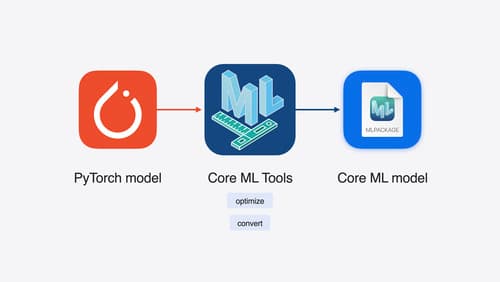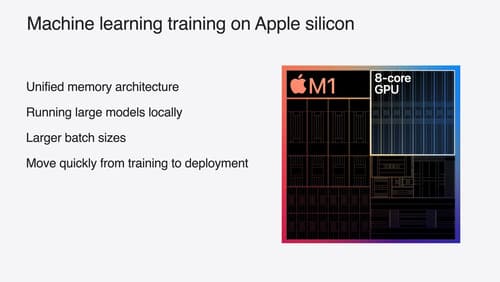what are you doing with ai
Asked on 2024-07-30
1 search
Apple is making significant advancements in AI and machine learning across its platforms, as highlighted in various sessions at WWDC. Here are some key points:
-
Apple Intelligence:
- Apple Intelligence is a new personal intelligence system that integrates generative AI models into iOS, iPadOS, and macOS. It enhances capabilities for understanding and generating language and images, and helps users take actions with a rich awareness of personal context. This system is deeply integrated into features and apps across the system, with a strong emphasis on privacy (Platforms State of the Union).
-
Machine Learning Frameworks:
- Apple provides built-in machine learning frameworks that offer capabilities in natural language processing, sound analysis, speech understanding, and vision intelligence. These frameworks can be extended using Create ML to bring in additional data for training, allowing for improved classification and object detection (Platforms State of the Union).
-
On-Device AI Models:
- Developers can import and run on-device AI models, such as large language or diffusion models, which have been developed and trained elsewhere. This is facilitated by Apple's powerful hardware, including the CPU, GPU, and neural engine, which allows for efficient and low-latency inference (Explore machine learning on Apple platforms).
-
Training on Apple Silicon:
- For those experimenting with training models, Apple Silicon provides hardware acceleration and unified memory, making it an ideal platform for using frameworks like PyTorch, TensorFlow, JAX, or MLX. Apple has also published research papers and open-source tools to support the AI research community (Platforms State of the Union).
-
Core ML Integration:
- Core ML makes it easy to integrate and use machine learning models in apps. It is tightly integrated with Xcode and offers a unified API for performing on-device inference across a wide range of model types (Deploy machine learning and AI models on-device with Core ML).
-
Research and Open Source Tools:
- Apple continues to push the boundaries of machine learning and AI through research and by making tools like MLX available via open source. MLX is designed for researchers to explore new ideas on Apple Silicon, leveraging its unified memory model for efficient operations (Explore machine learning on Apple platforms).
Relevant Sessions
- Platforms State of the Union
- Explore machine learning on Apple platforms
- Deploy machine learning and AI models on-device with Core ML
- Train your machine learning and AI models on Apple GPUs
- Bring your machine learning and AI models to Apple silicon
These sessions provide a comprehensive overview of how Apple is integrating AI and machine learning into its platforms, offering tools and frameworks for developers to create intelligent and efficient applications.

Bring your machine learning and AI models to Apple silicon
Learn how to optimize your machine learning and AI models to leverage the power of Apple silicon. Review model conversion workflows to prepare your models for on-device deployment. Understand model compression techniques that are compatible with Apple silicon, and at what stages in your model deployment workflow you can apply them. We’ll also explore the tradeoffs between storage size, latency, power usage and accuracy.

Explore machine learning on Apple platforms
Get started with an overview of machine learning frameworks on Apple platforms. Whether you’re implementing your first ML model, or an ML expert, we’ll offer guidance to help you select the right framework for your app’s needs.

Train your machine learning and AI models on Apple GPUs
Learn how to train your models on Apple Silicon with Metal for PyTorch, JAX and TensorFlow. Take advantage of new attention operations and quantization support for improved transformer model performance on your devices.
